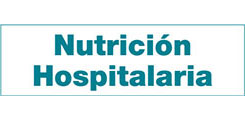Trabajo Original
Prevalencia de desnutrición al ingreso en un hospital general básico
Juan B. Molina Soria, Gabriela Lobo Támer, Antonio Jesus Perez De La Cruz, María Dolores Ruiz-lópez
 Número de descargas:
92441
Número de descargas:
92441
 Número de visitas:
11527
Número de visitas:
11527
 Citas:
2
Citas:
2
Compártelo:
Objective: The main objective has been to evaluate and quantify the prevalence of malnutrition at admission, the degree of severity and the correlation with the nutritional parameters in a basic general hospital of the first level.Methods: Observational, transverse, and randomized study of 244 patients (59.8% male and 40.2% female) performed during the first 24 hours of hospital admission and with a nutritional assessment including nutritional screening (CONUT®), anthropometric parameters, other analytical parameters and a quantification of hospital stay.Results: In this study, 60.7% of the sample has at least one criterion of malnutrition (anthropometric and/or analytical). When considering at least two altered nutritional parameters (one of them analytical type), the prevalence was 29.1%. Prealbumin and transferrin have been shown to be particularly sensitive to moderate to severe and mild malnutrition, respectively. CONUT® has detected nutritional risk of a mild nature in 39.8%. Malnourished patients have a longer stay, and are statistically significant in oncological versusnon-oncological patients.Conclusions: Anthropometric parameters, on their own, can generate some degree of controversy over the prevalence of malnutrition, so it is considered as appropriate to use two parameters, at least one of an analytical type. Prealbumin is the most sensitive and specific indicator, and CONUT® is an easy, quick and economical tool for nutritional screening. In order to greatly alleviate malnutrition at hospital admission, the objective of the study, it would be wise to strengthen its screening and treatment from Primary Health Care.
Palabras Clave:
Artículos más populares
Revisión: Inteligencia artificial generativa ChatGPT en nutrición clínica: avances y desafíos
ChatGPT y otras herramientas de inteligencia artif...
Revisión: Suplementación con micronutrientes y sus beneficios: ¿por qué y cuándo?
Introducción: los micronutrientes participan en la...
-
Licencia creative commons: Open Access bajo la licencia Creative Commons 4.0 CC BY-NC-SA
https://creativecommons.org/licenses/by-nc-sa/4.0/legalcode




